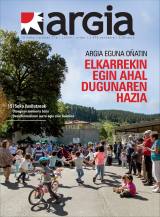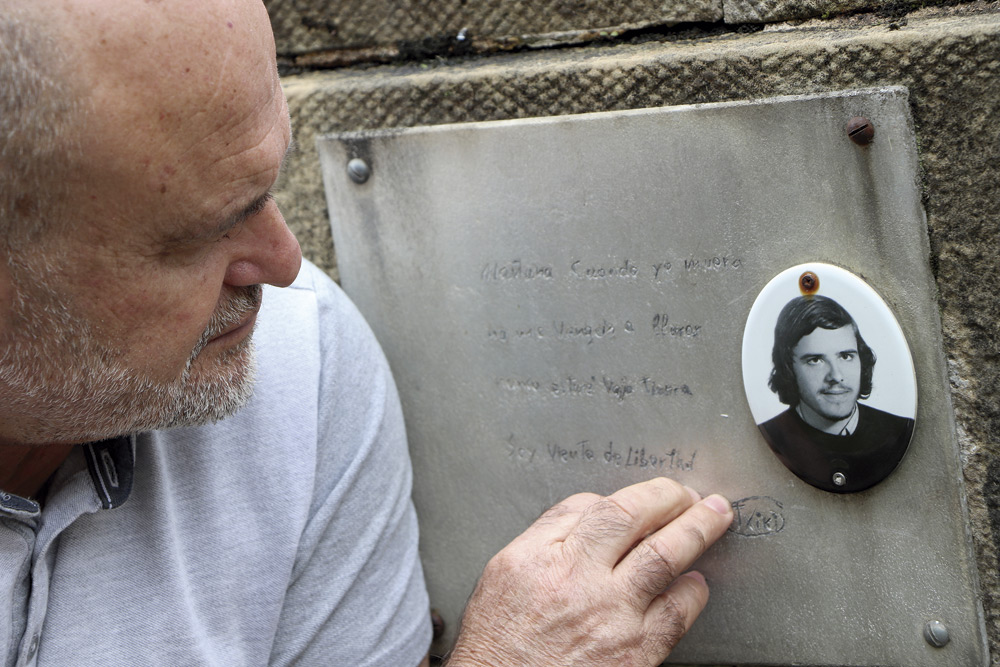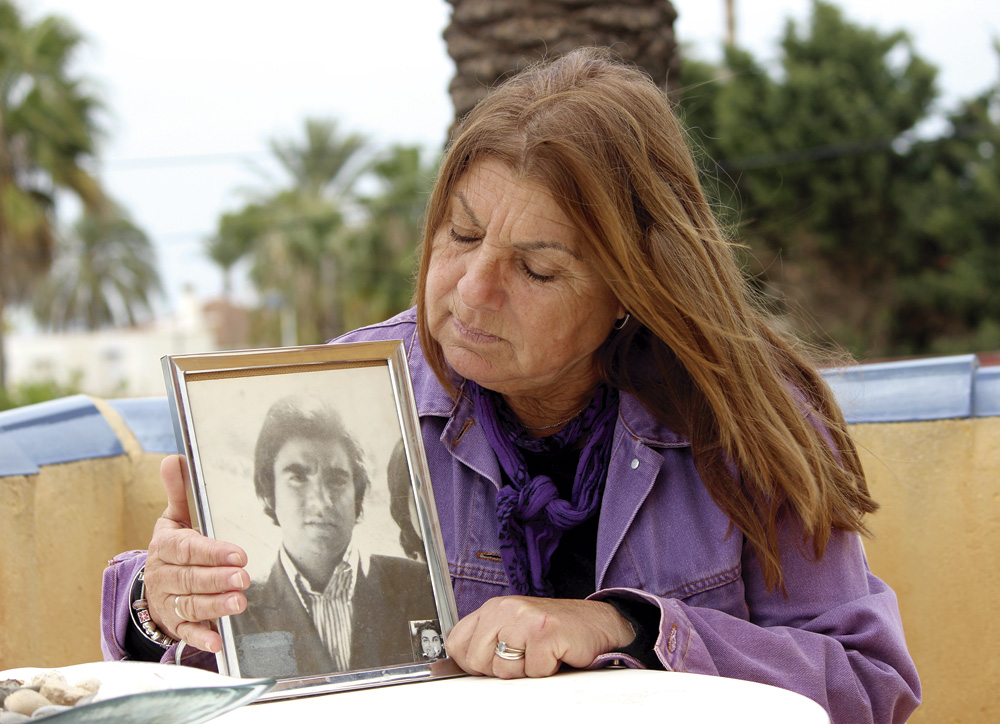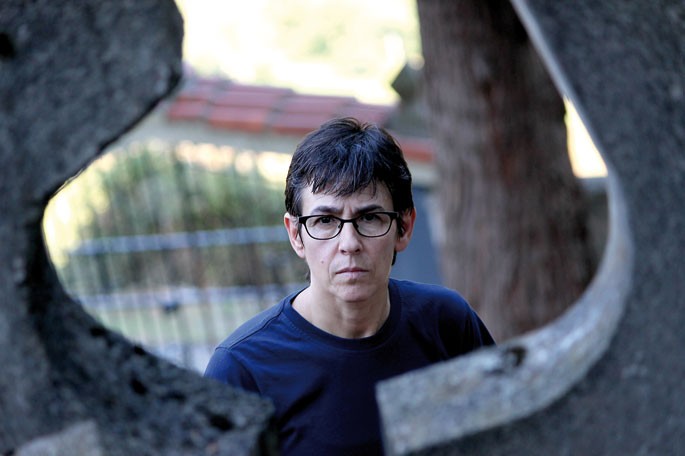Clandestine press as a source of solidarity
- To address the emergency situation of 1975 and the information blockade of Franco, we created the newsletter "News of the Basque Country during the state of emergency". In Euskal Herria, in the Spanish State and in other European countries, 50,000 copies of each issue were distributed in silence and hand. This is the story of those who were hiding behind that clandestine experience.

In times of freedom and democracy, the press is fundamental, especially when repression and official censorship are imposed, as happened in the Franco regime. Censorship and misinformation compel us, force us to go underground and disseminate truthful information. Faced with the brutal repression that we suffered in Euskal Herria during those years, there was a need to create movements of solidarity, and the information – concealed, of course – was a great tool.
This is what we tried when a group of friends started to publish the newsletter Noticias del País Vasco during the state of emergency (Euskal Herria news in times of emergency). The generations who did not experience this situation should know firsthand small but important stories such as the one published in this newsletter.
ETA and FRAP militant firings
On 27 September, the death and shooting of José Humberto Baena, José Luis Sánchez Bravo and Ramón García Sanz, three members of the FRAP, and of Jon Paredes Manot Txiki and Ángel Otaegi Etxeberria, of ETA, took 40 years. The fascist regime of Franco was in force. The War Councils, those macaque judgments of a military nature, were nothing more than judicial breaches, because the decree of the Anti-Terrorism Act had given the hand to police and judges for everything. The repressive rise initiated in May 1975 as a result of the state of emergency declared in Bizkaia and Gipuzkoa reached its peak when the five militants were shot – on page 11 of this issue of Argia you can read an interview with Mertxe Urtuzaga Otaegi, family member of Angel Otaegi.
In  Euskal Herria, since 1967 we have experienced several situations of emergency: terrible times in which “constitutional” guarantees were eliminated and repressive forces were allowed to play freely. To do so, Franco was supported by the majority of the media. In any case, on 22 May all information on Bizkaia and Gipuzkoa was declared “reserved matter”. In this way, the regime continued more calmly the official misinformation and the doors of repression were opened wide by arrests and torture.
Euskal Herria, since 1967 we have experienced several situations of emergency: terrible times in which “constitutional” guarantees were eliminated and repressive forces were allowed to play freely. To do so, Franco was supported by the majority of the media. In any case, on 22 May all information on Bizkaia and Gipuzkoa was declared “reserved matter”. In this way, the regime continued more calmly the official misinformation and the doors of repression were opened wide by arrests and torture.
In this context, the clandestine initiative of the publication of Noticias del País Vasco during the state of emergency, independent of political and trade union groups, emerged. It was about making known what was really happening to as many people as possible – especially the anti-fascist fighting sector, which had your ideology – and spreading it not only in the Basque Country, but also in the Spanish State and beyond.
After returning from exile, I had to return abroad in 1975, just when the state of emergency came into force. I hid in Madrid. There I related to the progressive areas, especially the people who were at the base of the unofficial Church, and some clandestine political parties. As a result of these contacts, I realized right away that we had to deal with the misinformation about Euskal Herria, building an alternative system. Xabier Sánchez Erauskin, a colleague and friend of the victim, was also then in Madrid, where he lived. I talked to him, we analyzed the issue and decided to create a newsletter that would reach Euskal Herria, the entire state and also Europe. He left us the house, the money and the car thanks to the invaluable help of a Basque from Madrid, and using the sources of information we had in Euskal Herria, we began to launch the newsletter.
28 May 1975: first newsletter
The first newsletter was released on 28 May. In the two months that elapsed between that date and the end of the state of emergency, 15 bulletins were issued with an approximate length of 200 pages. The following five numbers are added to them: The latter received information from the War Councils and the reaction of the population against them.
We published the newsletter in secret in Madrid, and with the help of the citizens we managed to disseminate it to Euskal Herria and the entire state. The information came to other European countries and also to America, where foreign journalists and the main embassies in Madrid collected the newsletter. Radio Paris, Pyrenaica, BBC, Le Monde, France Press, Reuters, Associated Press, Unaited Press International and other prestigious agencies also had their own newsletter. I worked very hard with them as a correspondent in France and Germany, including José Antonio Novais and Walter Haubrich.

The information we received from people of complete confidence (lawyers, priests, lay people...), In many places in Euskal Herria, people risked their safety and their lives, as the shadow of Captain Manuel Hidalgo, of the Civil Guard, was persecuted. Hidalgo believed that the center of operations (writing, printing, distribution…) of the newsletter was in the Duranguesado: At the head of the Gernika headquarters, several detainees were interested in the place where the newsletter was printed, but never succeeded. However, he was convinced that it was published in some people of the Duranguesthouses and he said so before the detainees.
The newsletters were warmly and broadly welcomed, we coordinated in Sánchez Erauski and we were also surprised. Many people participated: some donated money to pay the expenses, others opened the doors of houses and churches to place the multi-highways, and those who left the car to make the distribution were also few.
The main distribution center was in Aranda de Duero, from where it extended to Euskal Herria, Sevilla, Barcelona or Valencia. We made the connection with the Basque Country, traveling from Madrid to Aranda de Duero; from Bilbao came another car to collect the collection newsletters from the portfolios, and from there they took them to the other destinations. Some of them allowed us to use their multicopiers and offices to edit, copy and multiply documents. And stamped envelopes, especially bank envelopes, were also needed for the newsletter to be distributed rapidly throughout the Spanish State. It was also common to republish the newsletters, either from your own country or from the work centre's office.
Over 50,000 units
Thanks to the generosity of the contributors we obtained 50,000 copies per issue, a newsletter that would surely have at least 150,000 readers. The editorial Ruedo Ibérica, located in Paris, later published a book: Euskadi, the last state of emergency in Franco. This book was produced by the newsletter's editorial team and reported various aspects of the hidden information experience.
Why was it so successful? And what drove so many people to collaborate in the dissemination of clandestine information? The reasons are obvious: the newsletter filled a big information gap; people were hungry for real news. When drafting newsletters, we tried to treat the news with seriousness and objectivity, which was also a guarantee for the reader. Likewise, rhetorical information was abandoned and often descriptions of the facts were given on these pages.
Hidalgo never managed to undo that hidden information and we managed to get a large part of the population to realize what was happening. In this way, there was a movement of solidarity in the Basque Country and abroad, and an example of this is the response that has occurred between society by the shooting of the ETA and FRAP militants. It is time to thank those who made the 1975 newsletter possible and to acknowledge their work, although some are already dead.
Irailak 27, krimenaren +42. urtea. Gezurra dirudi Bartzelona urrunean abokatu zahar bati eztarria korapilatzea, euskaldunok espektakulutan entreteniturik gabiltzan bitartean.
Tramitera ere ez dute onartu auzitegiek eskaera. Azpeitiko Udalak eta familiak frankismoaren krimenen kontrako Argentinako kereilara batuko dute kasua.
Haren hilketaren erantzuleak zeintzuk diren argitzea eta horiei ardurak eta erantzunkizunak eskatzea nahi dute. Horretarako, sumarioaren kopia bat eskuratzea nahi dute. Bidea "zaila" izango dela azaldu du Angel Otaegiren familiako abokatuak, baina "merezi"... [+]


















